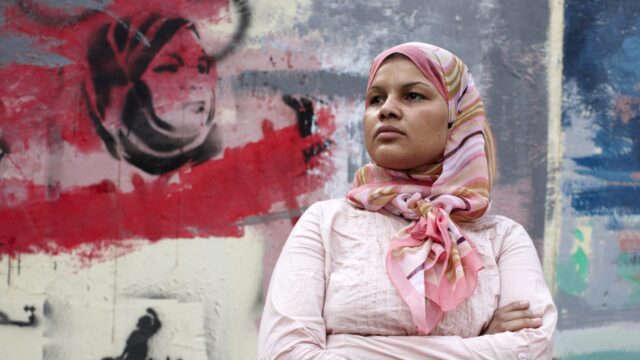
Salah Mansour Biography: Age, Net Worth, Cause Of Death, Pictures, Wife
Biography
Salah Mansour, a remarkable Egyptian artist, was born on the 15th of July, 1925, in the culturally rich city of Cairo, Egypt. His name is synonymous with the modernization of contemporary Egyptian art. He is recognized for his immense contributions to its development, which he achieved through his exceptional usage of traditional Egyptian patterns and skillful experimentation with various forms of media.
Salah Mansour‘s unique artistic vision, inspired by his Egyptian heritage, manifested in his works that represented the essence of his culture freshly and innovatively. He infused his art with ancient Egypt’s mystical and enchanting elements, which captivated viewers’ imagination and added an extraordinary dimension to his work.
Trending Now!!:
Salah Mansour left an indelible mark on the Egyptian art scene through tireless experimentation with media. He used everything from paint and canvas to sculpture and ceramics and even developed a technique that combined painting and engraving, producing stunning, complex, and intricate works.
He was a true pioneer of contemporary Egyptian art whose influence and legacy continue to inspire new generations of artists.
Salah Mansour | |
|---|---|
 | |
| Wiki Facts & About Data | |
| Full Name: | Salah Mansour |
| Born: | 15 July 1925 |
| Place of Birth: | Cairo, Egypt |
| Died: | 22 August 2010 |
| Nationality: | Egyptian |
| Height: | N/A |
| Parents: | Mohamed Mansour |
| Siblings: | N/A |
| Spouse: | Maie Salah Mansour |
| Girlfriend • Partner: | N/A |
| Children: | 2 |
| Occupation: | Artist |
| Net Worth: | $200,000 |
Early Life & Education
Salah Mansour, an esteemed Egyptian artist, was born on July 15, 1925, in the bustling metropolis of Cairo, Egypt. His formative years were spent in an environment where education and the arts were highly esteemed, thanks partly to his father, Mohamed Mansour, a distinguished lawyer, and a renowned art enthusiast. This early exposure to art, courtesy of his father’s passion for the same, instilled a deep-seated love for the same in Mansour.
As he grew older, his passion for the arts led him to enroll at the Cairo School of Fine Arts. Here, he honed his skills in painting and drawing, and it was apparent to all that he possessed a unique talent, both in terms of technical finesse and boundless creativity.
In 1949, Salah Mansour graduated with a fine arts degree, which set him on the path to becoming one of the most prominent figures in contemporary Egyptian art.
Career
Salah Mansour‘s artistic journey began at 16 when he enrolled at the prestigious Cairo School of Fine Arts. He grew up in a family that valued education and the arts, and his father, Mohamed Mansour, was a renowned lawyer and an ardent patron of the arts. His father’s influence led to his exposure to the wonders of art from an early age, with frequent visits to museums and galleries in Cairo.
After graduating from the Cairo School of Fine Arts, Salah Mansour was awarded a scholarship from the French government, which he gratefully accepted. He then embarked on a sojourn to the City of Lights to study at the Ecole Nationale Superieure des Beaux-Arts, where he was introduced to various art movements, including Cubism and Surrealism, that would later shape his work. During his stay in Europe, he took advantage of the opportunity to explore the continent, visiting museums and galleries and studying the work of the great masters.
In 1953, Salah Mansour returned to Egypt, eager to start his career as an artist and a teacher. He soon joined the faculty of the Cairo School of Fine Arts, where he taught for more than 30 years, mentoring several generations of aspiring artists. He was also a co-founder of the Contemporary Art Group, which comprised a clique of young artists who sought to break free from the stifling conservatism of the Egyptian art scene.
Throughout his career, Salah Mansour experimented with various media and styles, constantly pushing the boundaries of artistic expression. He was especially interested in using traditional Egyptian motifs and symbols in his work, fusing them with modern techniques and materials to produce a unique artistic voice. Mansour’s oeuvre was characterized by a powerful social commentary, which he imbued with a sense of empathy and humanity. In his later years, he focused on the struggles of the Egyptian people and their identity as he sought to capture the zeitgeist of his time.
Salah Mansour‘s early work was received with critical acclaim, and he rapidly rose to become one of the foremost artists of his generation in Egypt. His contributions to the development of contemporary Egyptian art are widely acknowledged, and his work remains an inspiration to countless artists who have followed in his footsteps.
Personal Life
Salah Mansour, a renowned Egyptian artist, was dedicated to his craft, family, and community. He and his wife, Maie Salah Mansour, were blessed with two children, and they made their home in Egypt, where Salah had grown up surrounded by the country’s rich cultural and artistic heritage.
Apart from his passion for art, Salah Mansour also had a heart for philanthropy. He believed in giving back to society and was actively involved in various charitable activities. Through his art and actions, he sought to inspire others to join him in positively impacting their communities.
Salah Mansour‘s commitment to philanthropy reflected his deep-rooted values and beliefs. He understood the importance of using his talents and resources to help those in need, and he did so with sincerity and humility. His legacy as an artist and a humanitarian lives on and continues to inspire generations of Egyptians and art lovers around the world.
Artistic Style
Salah Mansour‘s artistic style was heavily influenced by his Egyptian heritage. His work reflected his passion for traditional motifs and symbols, such as the intricate patterns found in Islamic art, hieroglyphics, and pharaonic figures. However, he needed to be more content to repeat these well-known designs and instead use them as a foundation for experimentation with modern materials and techniques.
He combined traditional elements with unconventional materials, such as found objects and industrial materials, creating a unique and innovative style. Salah Mansour‘s work was visually striking and had a deep social commentary that reflected the struggles of the Egyptian people and their identities, particularly in his later years.
He was not afraid to address controversial issues in his art, using his platform to raise awareness about societal problems such as poverty, oppression, and corruption. Through his art, Salah Mansour gave a voice to the voiceless and inspired many to take action and strive for a better future.
His work blended past and present, tradition and innovation, reflecting his passion for his country and people. It was a testament to his skill and creativity as an artist and his unwavering dedication to using his talents for the greater good.
Death and Legacy
Salah Mansour‘s artistic oeuvre is studded with numerous masterpieces, among which one of the most celebrated ones is the mural he created for the Egyptian Museum in Cairo. Covering an area of 240 square meters, the mural recounts the history of Egypt from ancient times to the present day, showcasing Mansour’s immense artistic flair and technical skills. His sculpture “The Lotus” is also a remarkable work, paying homage to the 1952 Egyptian revolution and reflecting Mansour’s passion for his country’s culture and history.
Throughout his illustrious career, he was awarded several awards and honors, including the State Merit Award for Arts and Sciences in 1981 and the UNESCO Prize for the Promotion of the Arts in 1995. Art connoisseurs and enthusiasts worldwide flocked to witness his exceptional works, displayed in prestigious galleries and museums such as the Louvre in Paris and the Museum of Modern Art in New York.
Salah Mansour‘s pivotal role in bridging the gap between traditional and contemporary art movements is well-known, and his contributions to the development of Egyptian art have been widely acknowledged. He was an inspiring teacher at the Cairo School of Fine Arts for over three decades, and his students continue to revere him for his unwavering dedication to the arts. His demise on August 22, 2010, at age 85, marked the end of a remarkable life dedicated to artistic excellence and preserving Egypt’s cultural heritage.
NOTICE!! NOTICE!! NOTICE!!
DISCLAIMER!! : Every Biography and Content Published On TheCityCeleb are For Knowledge Reason. Don't Hesitate to Reach Out for Any Correction || Suggestion || Copyright!!CORRECT@thecityceleb.com


